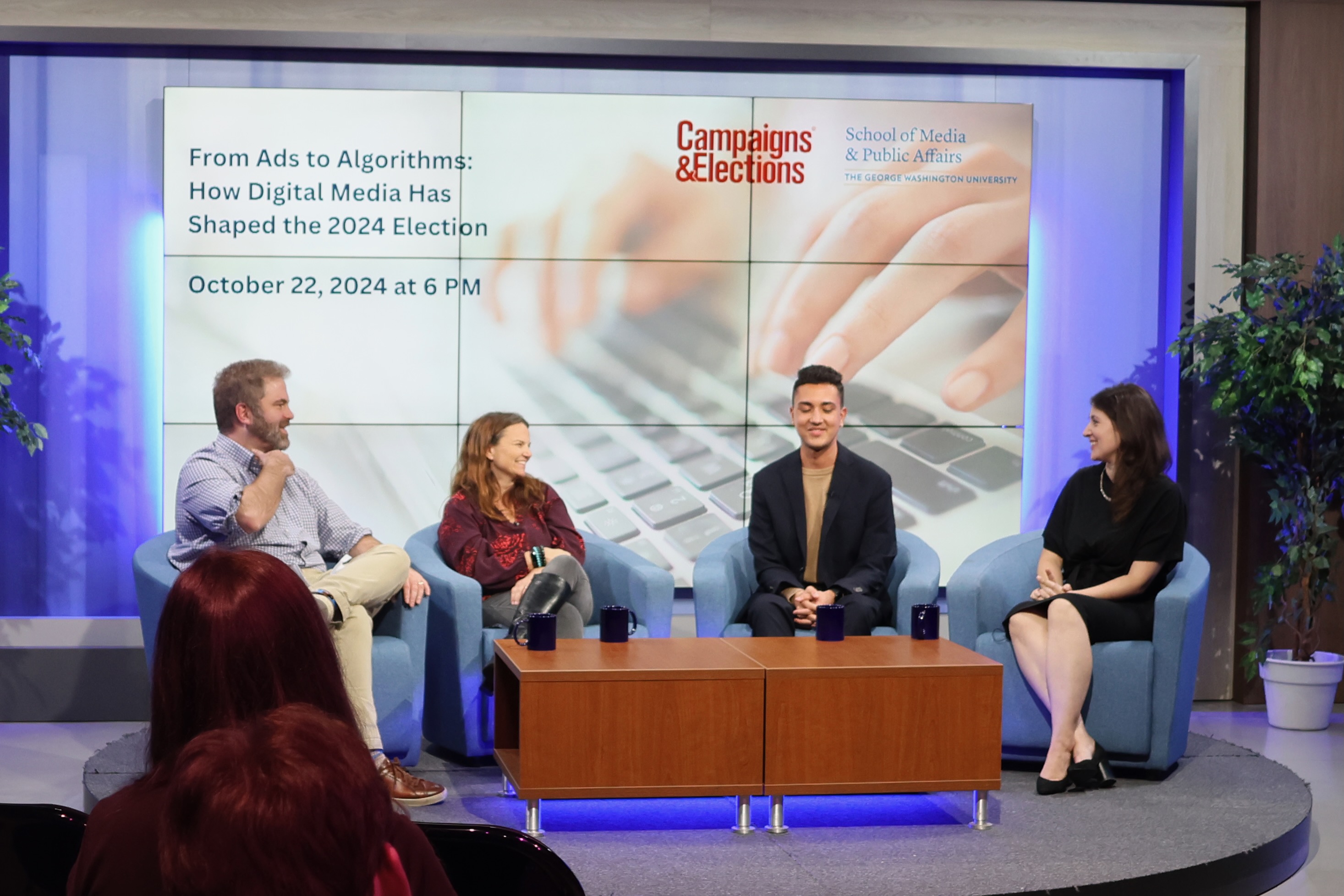This story originally appeared in GW Today.
As you scroll through Instagram or TikTok, you might encounter a campaign ad that looks very different from what’s traditionally seen in political advertising.
Ads are getting shorter and look more like casual social media posts than polished productions, with candidates speaking directly to the camera in selfie-style videos designed to feel personal and relatable.
A panel discussion, “From Ads to Algorithms: How Digital Media Has Shaped the 2024 Election,” hosted by the George Washington University School of Media and Public Affairs (SMPA), highlighted this shift in political advertising and explored how digital media continues to shape the 2024 election.
Moderated by Ethan Porter, an associate professor at SMPA, the panel was the second of a three-part conversation series this fall with SMPA, in partnership with Campaigns & Elections. The panelists were Taryn Rosenkranz, the founder and CEO of New Blue Interactive, Emily Karrs, the creative director at IMGE, and Massimo Alicea, a combined degree student studying political communication and media and strategic communication.
Porter asked what has set the digital ads of this campaign cycle apart from other years, particularly in terms of style and production.
Karrs said campaigns are opting for more informal ads that appear more organic when viewers encounter them on social media platforms.
“When people imagine a political ad, they think of a big glossy thing you see on broadcast TV that tells a sweeping epic story,” Karrs said. “But as digital technology comes into its own, people are spending more time looking at the data to see what actually works. And most people really don't like things that look like political ads. So the more you can make your ad look like something you see on social media, in particular, I would say like the candidate selfie video. That’s one you've probably seen everywhere because the numbers show us it absolutely works.”
Karrs said this tactic works because it feels personal, unpolished and connects better with voters.
Alicea added that digital ads have adapted to audiences’ viewing habits.
“The informal style of digital ads has increased versus like television ads, and I think that’s in large part because of the rise of people consuming their entertainment on digital platforms, whether that's social media platforms or even YouTube videos,” Alicea said. “I’m sure we’ve all seen political ads before YouTube videos and that's different than a 30-second or minute-long television ad in a lot of ways.”
Rosenkranz said ads are getting much shorter. She acknowledged the challenge in condensing campaign messages into just a few seconds but agreed it has proven effective in reaching viewers who otherwise avoid political content.
Porter asked what to expect in the digital ad landscape as Election Day approaches.
Karrs said that in the final days leading up to the election, both campaigns will make an intense push to capture undecided voters. She gave the example of campaigns using available voter information to identify those who have requested absentee ballots but have yet to return them.
“So, the nag ads, those are going to be everywhere,” Karrs said.
Alicea said in the final days before Election Day campaigns will try to readjust their messaging to reach individuals they believe are still persuadable.
“Digital advertising wasn't born yesterday. I want thoughts on what we've learned from our experiences with prior elections and video advertising. Are there strategies that have been tried and used, but we've abandoned? Tell me about the lessons you’ve learned,” Porter asked.
Rosenkranz shared that over the years, she’s realized the importance of continually evaluating and updating strategies to ensure they remain effective.
“I do think that from a best practice perspective, each time, if you're not testing, you're not going to be winning because it changes, the style, the brand,” Rosenkranz said. “Nothing from the last cycle can you be certain is going to be the same the next. So, you just have to be testing constantly. That's maybe the biggest lesson of all.”


